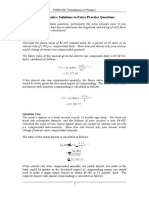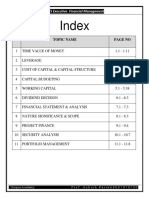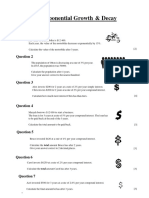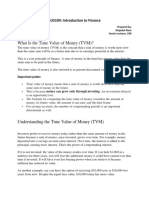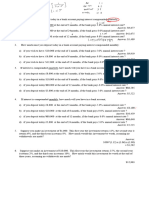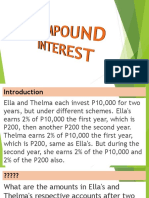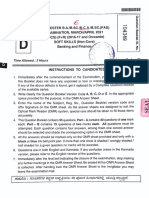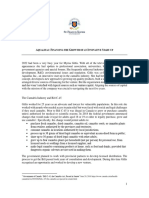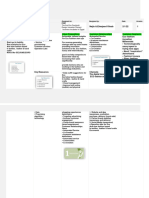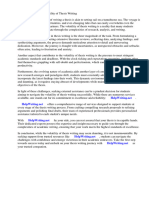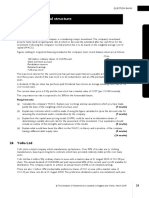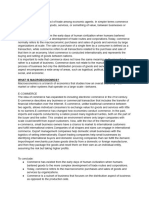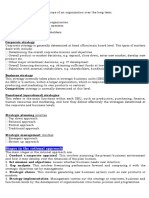Tutorial 1 Questions
Question One
Calculate the future value of $500 invested today for a period of 4 years at an interest
rate of 10% p.a. compounded annually. Show how and discuss why your answer
would change if interest was compounded daily.
Question Two
You have just successfully applied for a home loan. Calculate how much you are
borrowing given that the terms of the loan are as follows:
Your monthly repayments are $2,500;
The loan is taken over 15 years; and,
The interest rate you will pay on funds borrowed is fixed at 10% p.a.
compounded monthly.
Show how and discuss why your answer would change if interest were compounded
annually.
Question Three
Calculate the present value of an ordinary perpetuity that comprises one cash flow of
$50 at the end of each year given an interest rate of 9% p.a. compounded annually.
Show how and discuss why your answer would change if interest were compounded
weekly.
Question Four
What would be the balance of my bank account exactly 3 years from today if I made
deposits in the account as described below and earned interest at a rate of 10% p.a.
compounded annually on my account balance:
Time (from today) 1 year 2 years 3 years
Amount $50 $100 $150
Show how and discuss why your answer would change if interest were compounded
daily.
Question Five
‘Mad Dog’ McNamara wishes to accumulate $9,500 at the end of three years. How
much does he need to deposit now if the interest rate is:
a) 10% p.a. compounded annually?
b) 8% p.a. compounded annually?
c) 8% p.a. compounded monthly?
Can you explain why they differ in each case?
1
�Question Six
An investment repays $40,000 in five years and a further $60,000 in 10 years. If the
interest rate over the period is 12% p.a compounded monthly, what is the investment’s
present value?
Question Seven
a) You have the opportunity to purchase security Y that will pay $2,000 per year
forever. At an interest rate of 8% p.a., compounded annually, what is this
security worth?
b) An alternative security, Z, will pay $2,000 per year for the next 20 years.
Assuming the same interest rate compounded annually, what is this security
worth?
c) Explain the difference between the values of securities Y and Z.
Question Eight
The British government has a consol bond outstanding paying £100 per year, forever.
Assume the current interest rate is 4% per year (compounded annually).
a) What is the value of the bond immediately after a payment is made?
b) What is the value of the bond immediately before a payment is made?
Question Nine
When you purchased your car, you took out a five-year annual-payment loan with an
interest rate of 6% per year (compounded annually). The annual payment on the car is
$5,000. You have just made a payment and have now decided to pay the loan off by
repaying the outstanding balance. What is the payment amount if:
a) You have owned the car for one year (so there are four years left on the loan)?
b) You have owned the car for four years (so there is one year left on the loan)?






